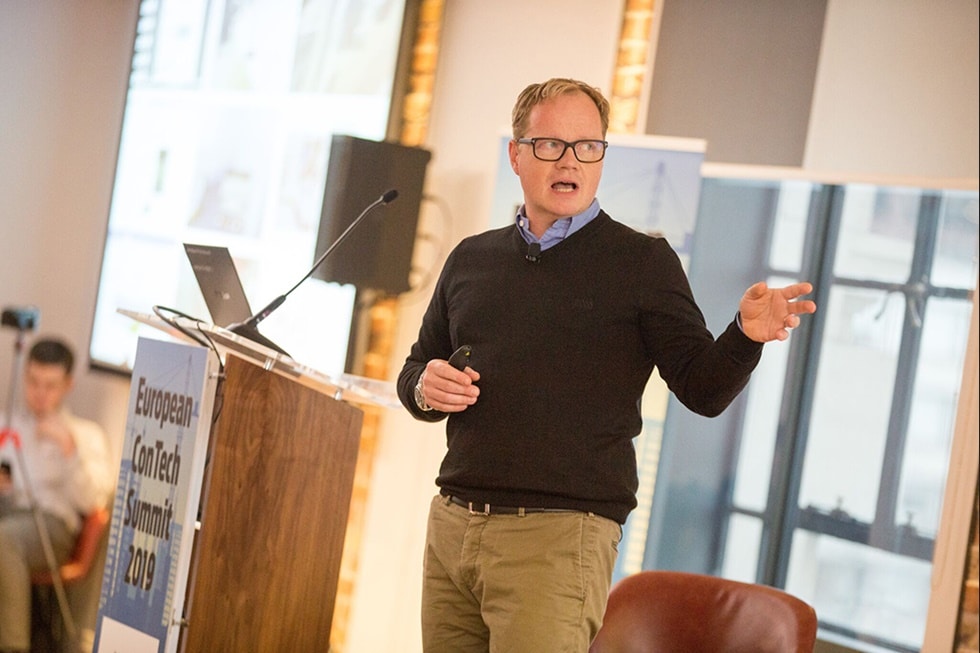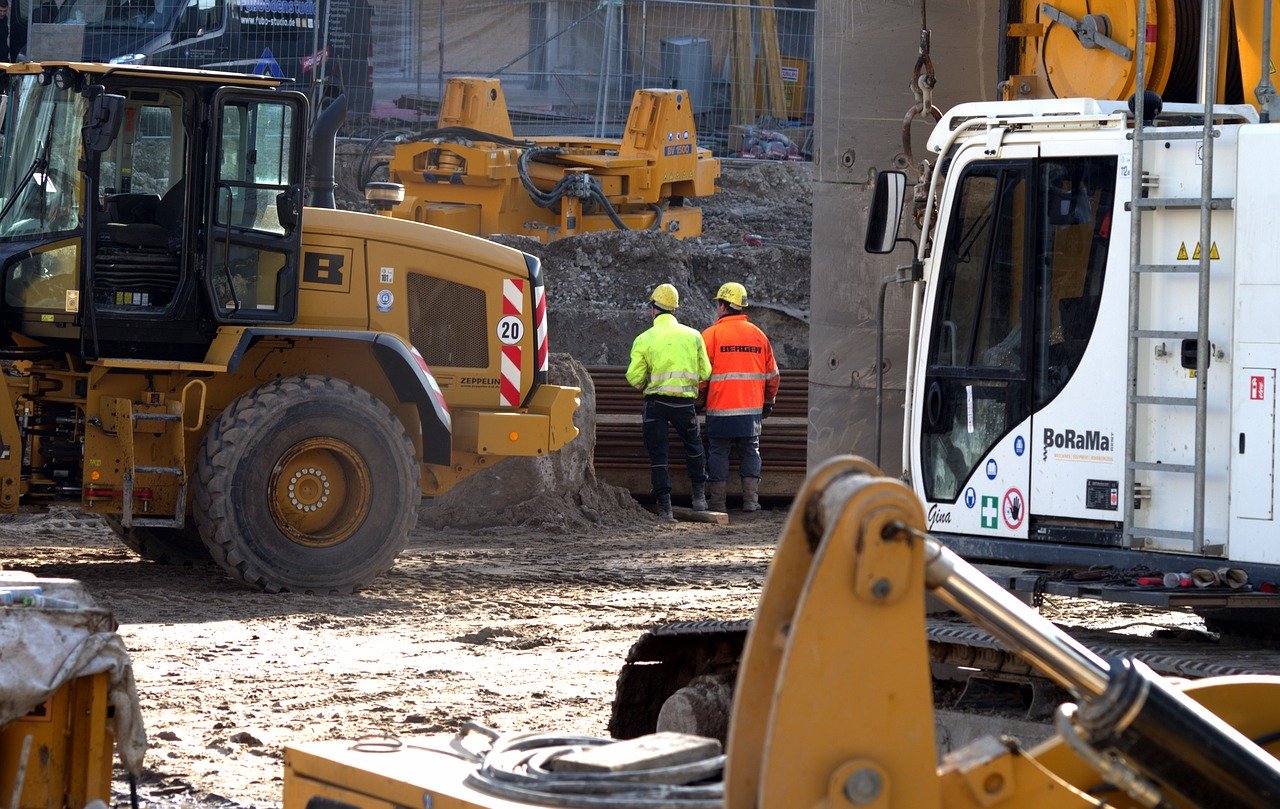“It’s a choice to run on tradition, not a fact. We need to stop running on tradition and start running on data!”
This is one of the main points made by Niels Falk, Partner and CEO at HD Lab, during his keynote speech at European ConTech Summit 2019. The discussion took place in London at the end of January and was co-hosted by GenieBelt, BIMobject, and Construction News.
[click_to_tweet tweet=”Niels Falk explains why construction should stop running on tradition and start running on data ” quote=”Niels Falk explains why construction should stop running on tradition and start running on data “]
During his presentation, Niels Falk highlighted that the construction industry is continuously growing as it accounts for approximately 12-15% of most economies in the world. Despite its massive size, though, the sector is under substantial pressure as a result of the serious skills shortage in construction.
“However, there are also fewer labourers who want to work in construction for less time. They aren’t going to be sawing wood until they’re 70. So, there is more work but less capacity. It’s a horrible scenario.”, said Niels Falk.
On top of that, Mr. Falk believes that the construction industry hasn’t managed so far to exploit the full potential of digital solutions. As a matter of fact, construction still seems to struggle with getting the basics right when it comes to digital technology.
After all, as Niels Falk suggested, a lot of digital technology has already been there for 25 years now. That’s an area where construction needs to improve soon.
Find also: Streamlining the construction process – 6 smart approaches
This need for a groundbreaking change in construction could also be seen as a great opportunity for all ambitious players in and out of the industry. The example of Unity, a leading video game development company, which is lately interested in entering the field of construction technology is very representative.
The three main areas of change in construction
Construction is, at the moment, a sector under a lot of pressure which is experiencing a paradigm shift. According to Niels Falk, there are three main arenas of change for the industry and they could be summarised to the following:
1. The market is booming
We already mentioned in the introductory part that the construction industry is growing at a remarkable rate in the course of the last years. This tendency is observed on a global scale and it is expected to continue in the future.
“If we look into the market, we have growth in construction. It’s a global phenomenon and in most countries, it’s like 12% to 15% of the gross national product. That’s a huge sector. It’s big, it’s growing and it’s growing fast.”, underlined Niels Falk.
But that’s only one aspect of the change that the market is currently witnessing. More specifically, Niels Falk believes that the product is also changing:
“The other thing that’s happening is that the product is changing and whereas the industry is still pretty much the way it looked 25 years ago when I graduated, the product is so different.”
And he continued by referring to the example of modern architecture:
“I come from Denmark, we have some amazing architects that they draw some crazy houses that they are very hard to put together. So if you work with big architects and you are trying to put a data center together for the full company, you see that this is a different ball game than what we were used to just 5-10 years ago.”
2. The technology is changing
Technology is another arena of great change for the construction industry. The problem here is that the available technology is much more advanced than what the sector is ready to use. The good news is that this cutting-edge technology can be really cheap and produce fantastic results.
In any case, though, construction needs to catch up with it first:
“Technology is changing. One of the things that I have actually noticed is that there is technology coming out that we don’t need yet. We are not ready for it. It’s coming out really fast but what’s really interesting is that it’s really cheap.” , explains Niels Falk.
As far as the reasons why construction isn’t ready for these technologies yet, Mr. Falk mentions the following:
“AEC is still a craft industry across the board. It’s not just the contractors. Everybody in AEC does craft. We are still a pre-industry 1.0. This is not a question of adopting industry 4.0 tools. We have not adopted industry 1.0 tools. This is an industry that’s left in pre-World War II scenario. So the potential is huge. But the change is astronomical.”
3. New organisation approach
Niels Falk referred also to the changes that are emerging with regards to the organisational scenery in the industry.
More analytically, the capacity issue seems to be one of the biggest threats for the future of the construction industry as there are fewer people for the job but more things that need to be done.
“It’s fewer people for construction. It’s not only that we have fewer labourers but they also want to become labourers for a shorter period of time. So the guys that I was working with 25 years ago, none of them are carpenters anymore. And also the younger ones they want an education to be a carpenter. So it’s higher education, shorter span and there’s fewer of them. So the capacity that we have is changing. You combine that with growth you can understand that it’s a horrible scenario. We have more we need to do and nobody to do it.”, said Niels Falk.
Furthermore, construction companies are also changing. Contractors are no longer just contractors. Simply put, the different players in the industry are trying to get involved in different areas of the construction process in order to increase profit. This means that the game in the sector is changing so everybody needs to adjust.
The main issues in construction
During his keynote speech, Niels Falk made also some very interesting remarks regarding the biggest issues that the construction industry is currently battling against. Here are some of the main points:
a) Change order is a “big boat”!
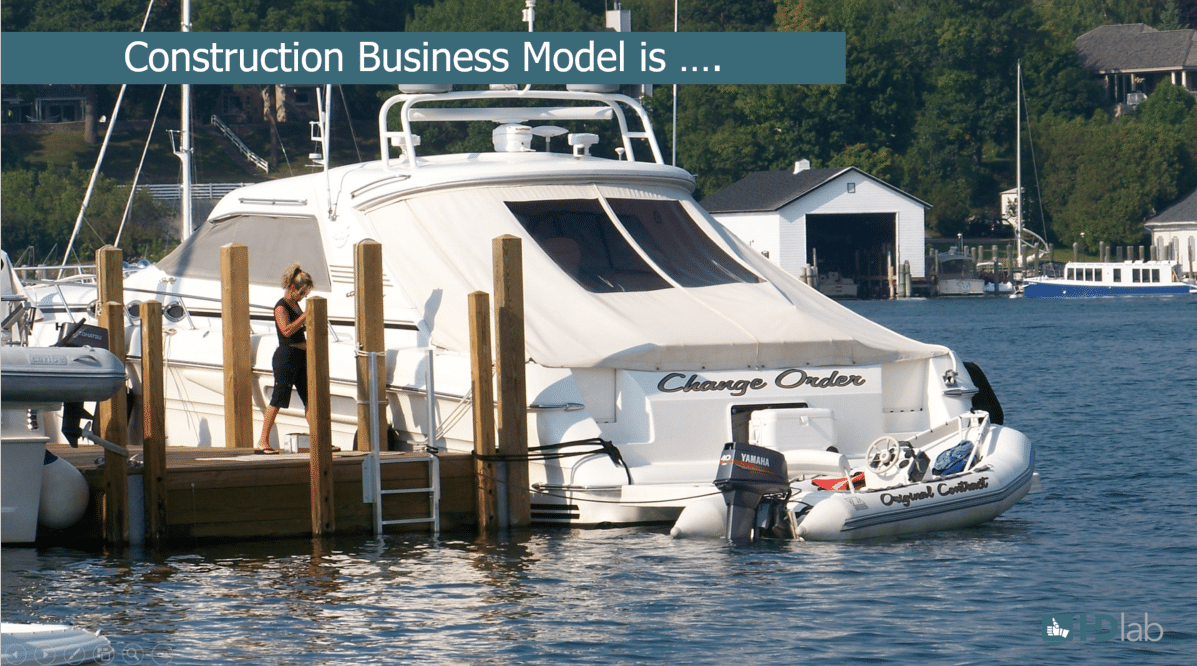
One of the most common and at the same time the biggest problems for the construction industry is the relation between the original contract and the change order. The photo below, as presented by Mr. Falk, describes perfectly how problematic the business model in construction actually is:
“This is what I was taught 25 years ago when I started in construction. This is your job: The big boat is called “change order”, the small boat is called “original contract”. Make the original contract small and the big boat the change order”, said Niels Falk.
Without a doubt, this is a very characteristic example of the lost potential in the construction industry and how many resources go to waste due to poor planning.
b) Hero management
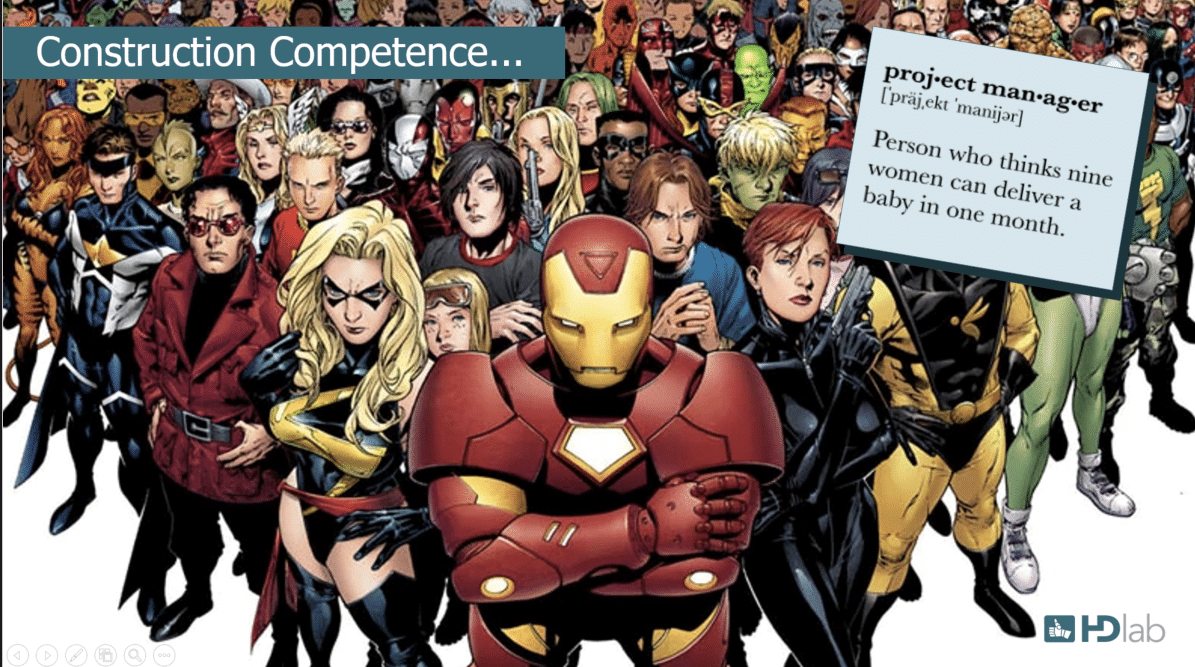
The fact that construction is largely depended on “hero management” is yet another serious issue that the sector has to solve.
“The second issue is the way we recruit talent and we use competencies. We do hero management. Whenever you organise a project the client will always say “who’s the project manager?”. It doesn’t matter! It’s just one person. They can’t run the project. Nobody has that kind of power.”, explained Mr. Falk.
And he added:
“So we line this group of superheroes that can’t really explain how they do it, they kind of work outside the rules, but at the end of the day, they save the planet. And probably they cause half of the problems that we pay them a great bonus to fix.”
c) Construction loves unpredictable work
In our blog, we have many times referred to the importance of data for construction and the need for the industry to take better care of it and become more digitalised. Niels Falk also supports this idea and believes that construction is run on tradition by choice.
Predictable work, data processing, and data collection are three areas where the industry needs to perform better and where robots could offer valuable help simply because they are really good in completing with precision the tasks they are asked to do.
Nevertheless, there are a plethora of activities in the industry that could be automated (eg. repetitive tasks) but for the time being, they are still conducted by workers.
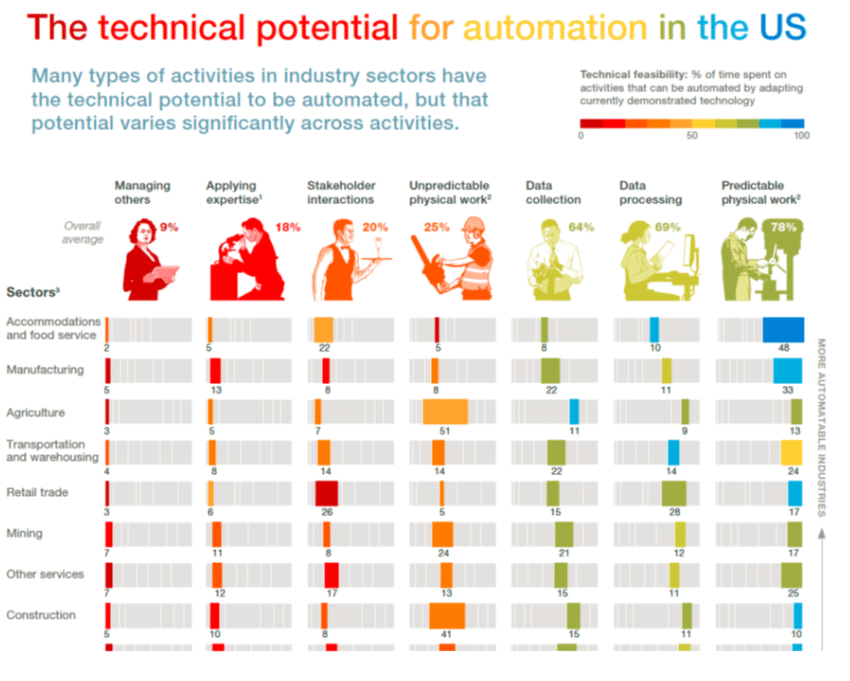 “That’s why robotics doesn’t work in construction. There’s too much stuff that needs to be done by people. It’s a choice, it’s not a fact. We’ve chosen that it’s the way we like it.”, highlights Niels Falk who also believes that construction is very similar to American agriculture as they both run on tradition instead of data:
“That’s why robotics doesn’t work in construction. There’s too much stuff that needs to be done by people. It’s a choice, it’s not a fact. We’ve chosen that it’s the way we like it.”, highlights Niels Falk who also believes that construction is very similar to American agriculture as they both run on tradition instead of data:
“American agriculture like construction is stuck in the ’50s. We need to stop running on tradition and start running on data”.
Technology needs to get jobs done
Last but not least, construction needs to get the technology to actually work. In the course of the last couple of years, a number of great technologies have been introduced but the truth is that the industry has to get the fundamentals right before we start falling for the “nice and shiny”.
“If we want to implement more technology in construction, we have to make it work. Giving people a very nice set of VR glasses is not going to fix it. We actually have to get the technology to work.”, notices Mr. Falk.
There are many ways in which technologies could improve the construction process. For instance, tendering and scheduling could be two areas where digital solutions could make a big difference leading to fewer project delays and budget overruns.
But for this to happen, construction should start using digital technologies as a way to get the job done. As Niels Falk concludes in his keynote presentation:
“We need technology to do the work, not just to support the people!”
